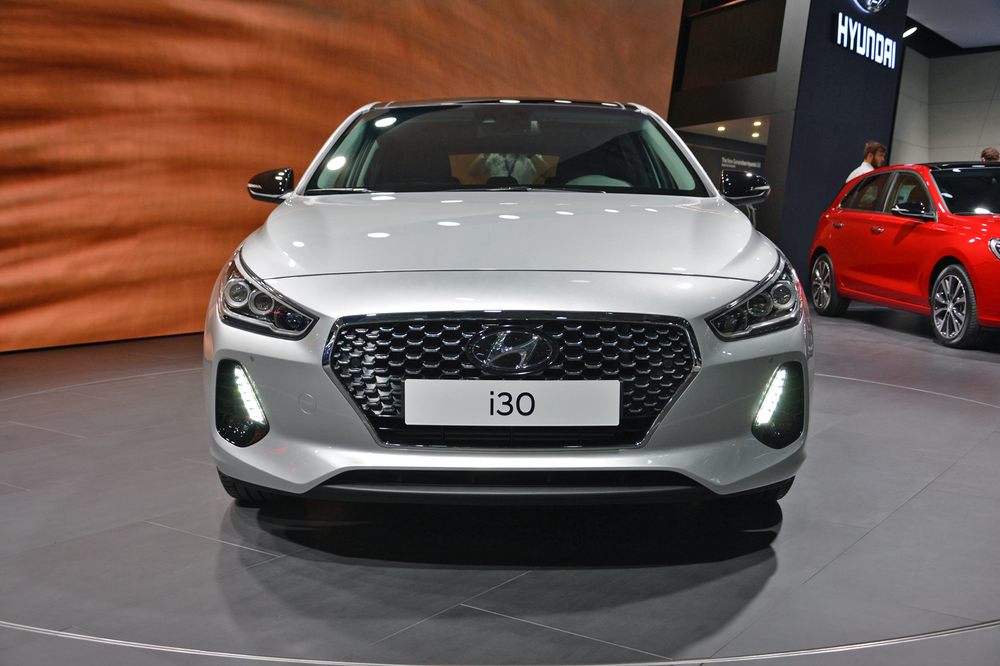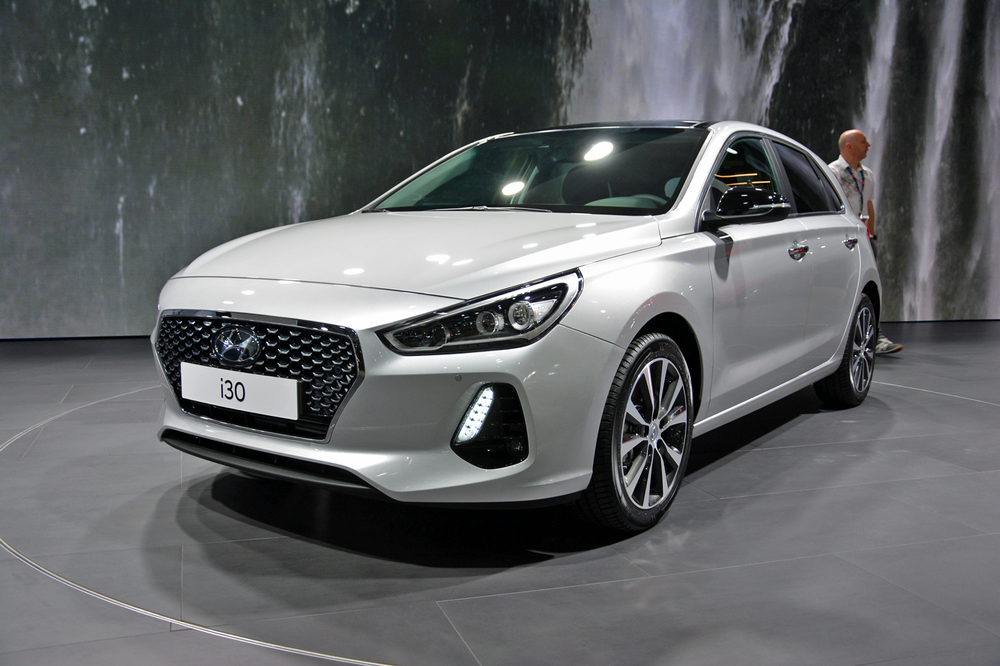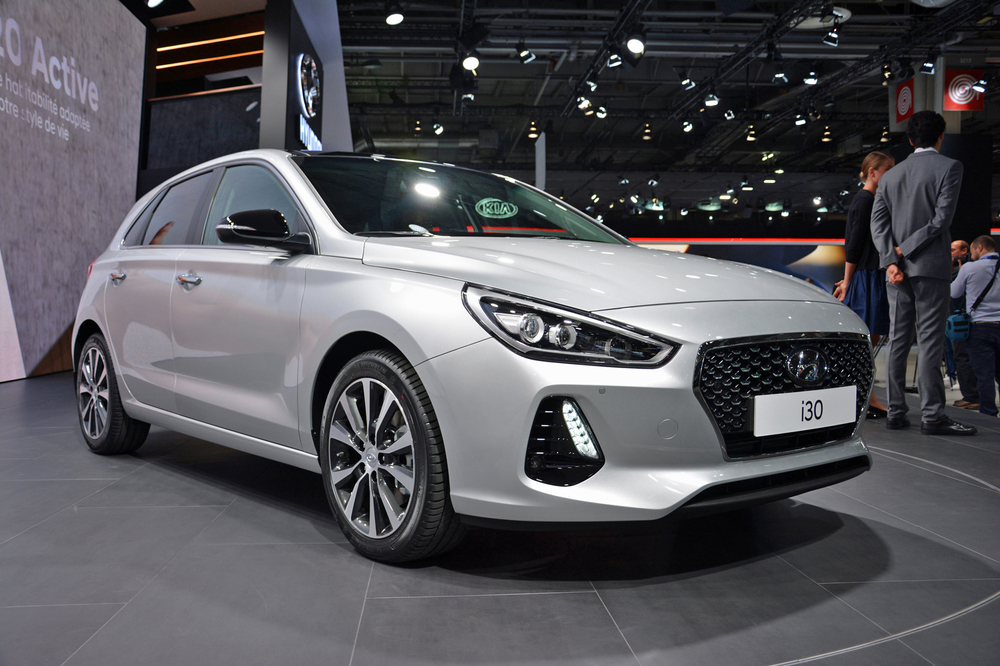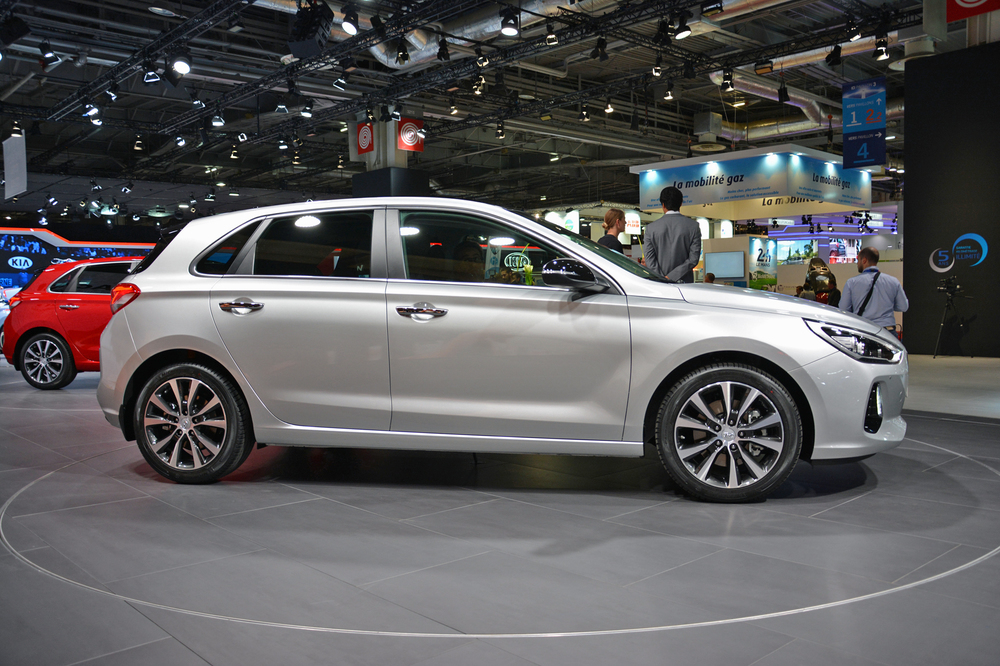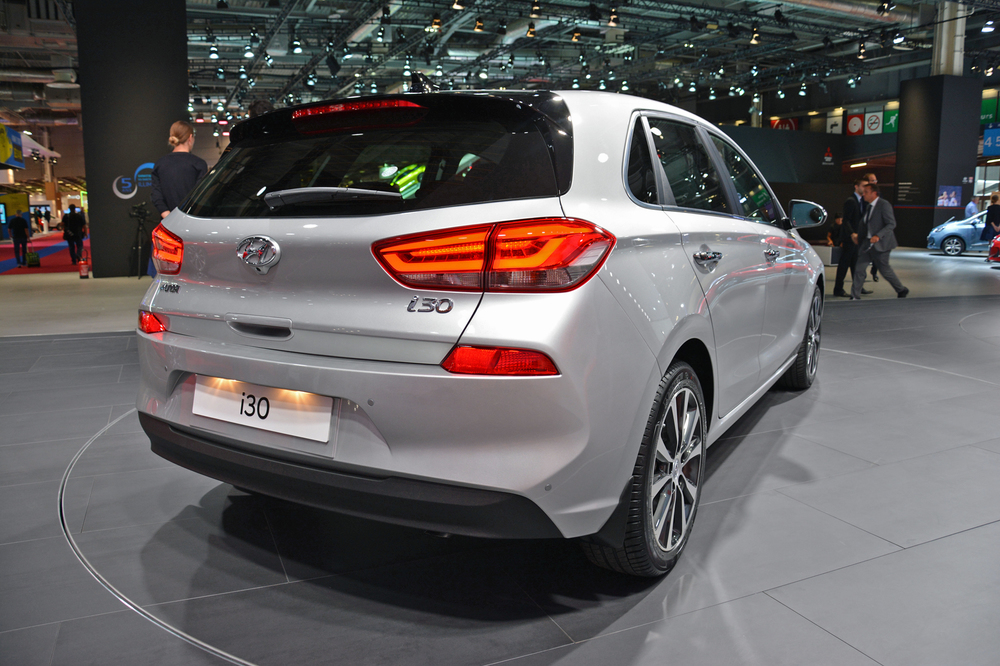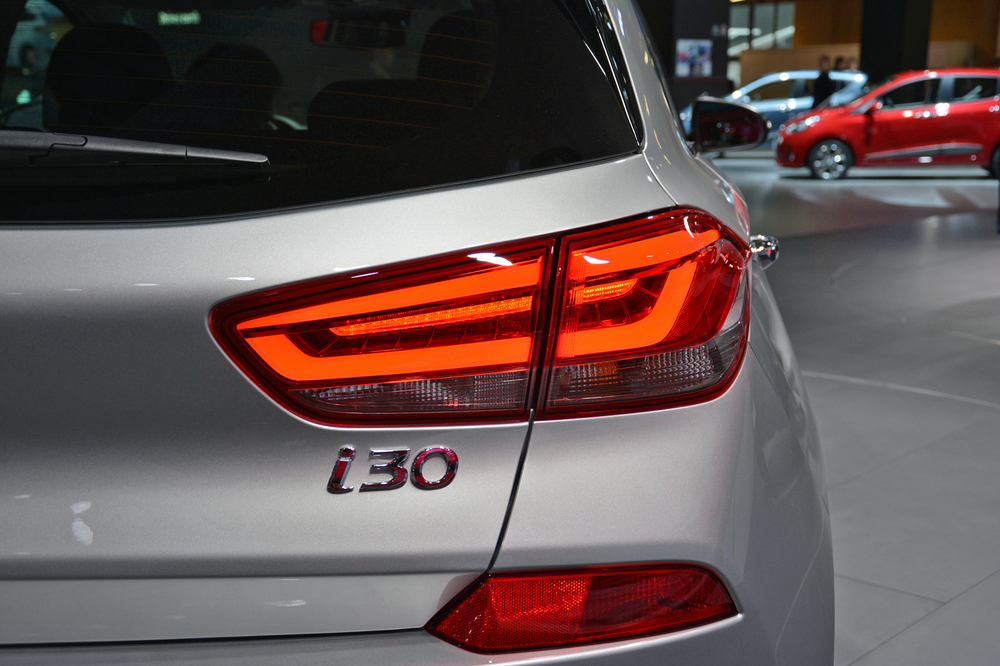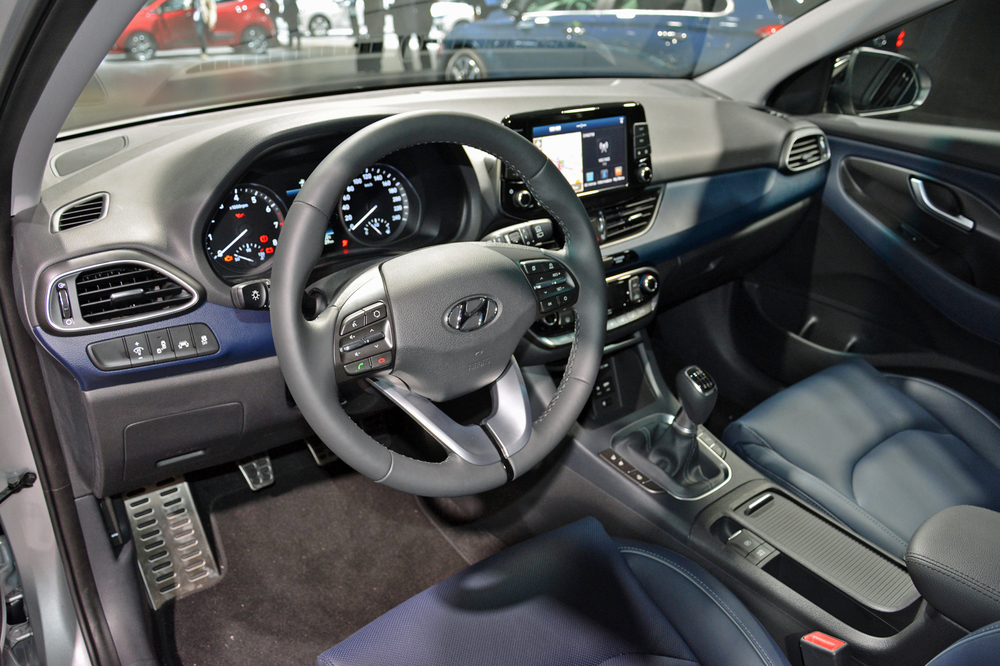Hyundai has lifted the veil off of the all-new i30, a compact hatchback that’s known as the Elantra GT in the United States. The i30 is being shown to the public for the first time at the Paris Auto Show.
Developed and penned in Europe, the i30 ushers in the next evolution of Hyundai’s design language. Its front end is characterized by a hexagonal grille — called a cascading grille in Hyundai-speak — with a thick chrome frame, swept-back headlights, and slanted LED daytime running lights integrated into the bumper. All told, it wears a much more refined design than the current model.
The refined look continues with an interior that’s noticeably more upscale than before. The bulk of the switches, knobs, and dials have been tossed out and replaced by an eight-inch touch screen. It’s programmed to run Hyundai’s newest infotainment system, but it’s also compatible with Android Auto and Apple CarPlay.
Buyers in Europe will be able to choose between three gasoline-burning engines with outputs ranging from 100 to 140 horsepower, and a single turbodiesel unit available with either 95, 110 or 136 horses. Front-wheel drive and a six-speed manual transmission will come standard, and a seven-speed dual-clutch automatic gearbox will be offered at an extra cost on select trim levels.
For enthusiasts, the most interesting member of the lineup is undoubtedly a hot hatch called i30 N that will fight in the same arena as the Volkswagen GTI and the Ford Focus ST when it goes on sale. Power will be provided by a turbocharged 2.0-liter, four-cylinder engine rated at about 255 horsepower and 228 pound-feet of torque. Front-wheel drive and a six-speed manual transmission will come standard, and a dual-clutch automatic transmission will be added to the lineup a little later in the production run.
Read more: Hyundai’s Ridgeline-punching pickup takes shape
The 2017 Hyundai i30 will go on sale in the months following its debut in the French capital. The model displayed in Paris will be Euro-spec, but it’s not too unreasonable to assume that the Elantra GT will debut shortly after at the Los Angeles Auto Show. The i30 N isn’t expected to debut until next year, however.
